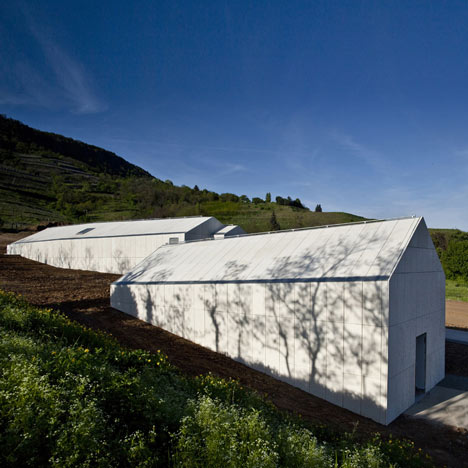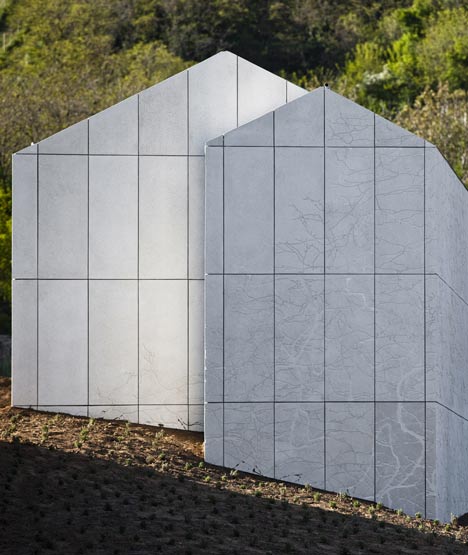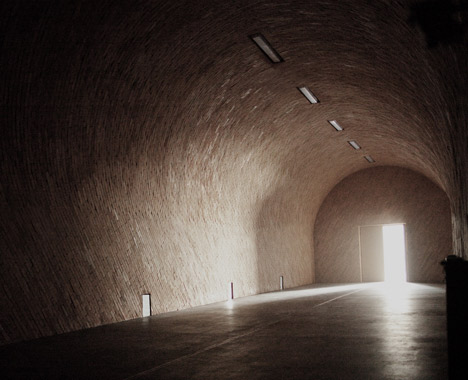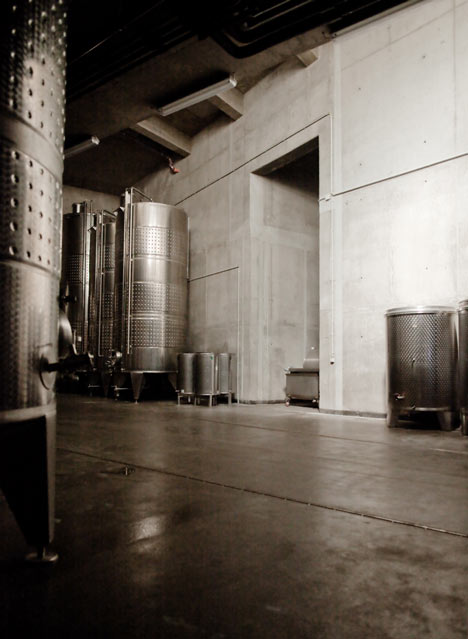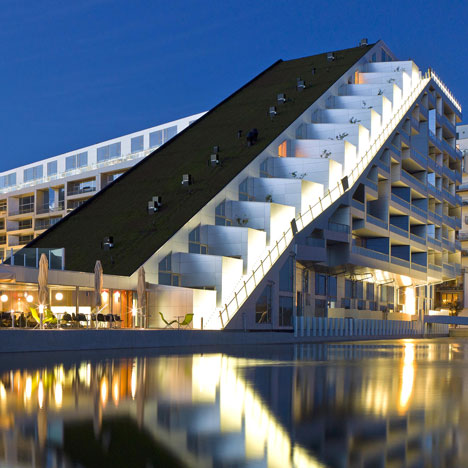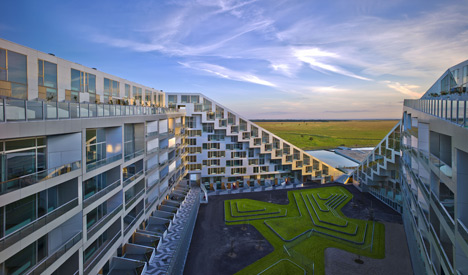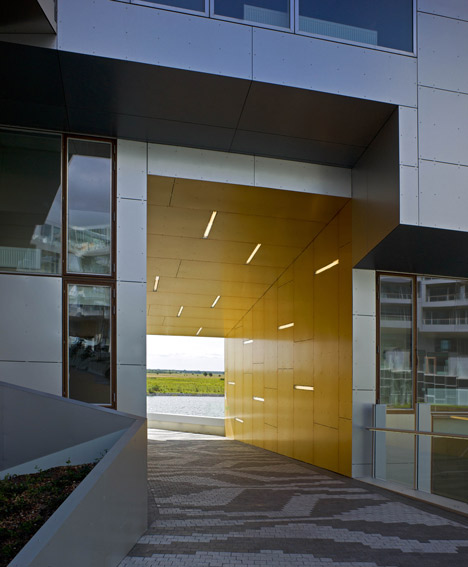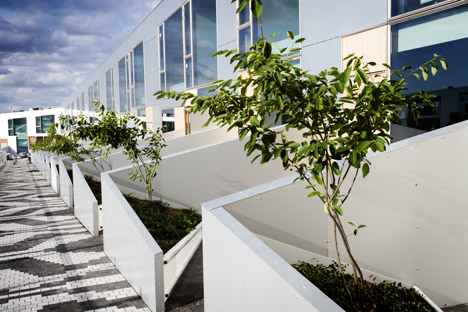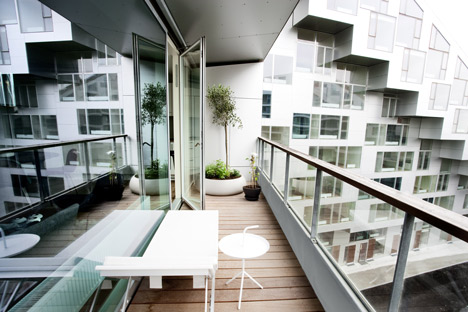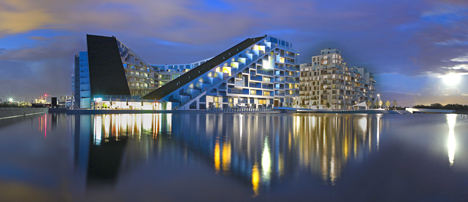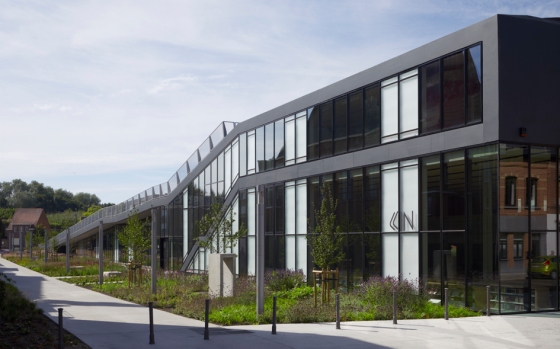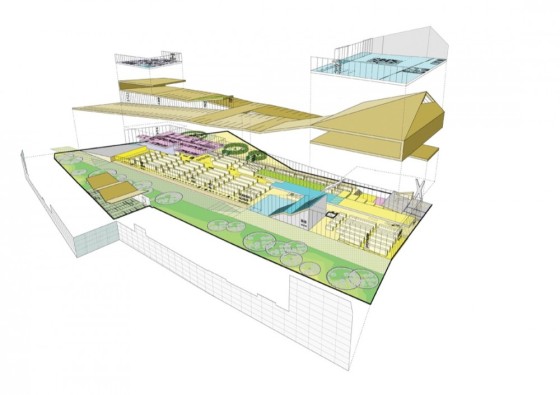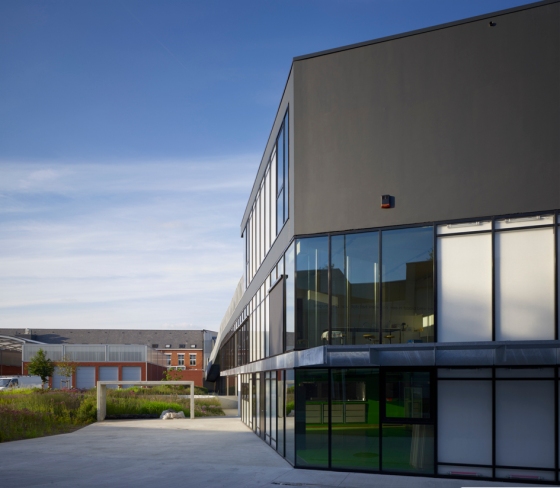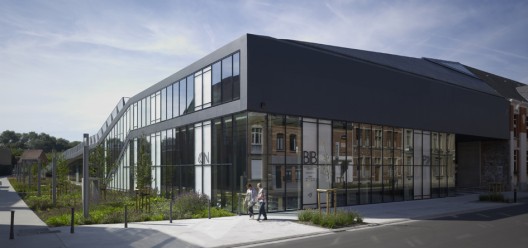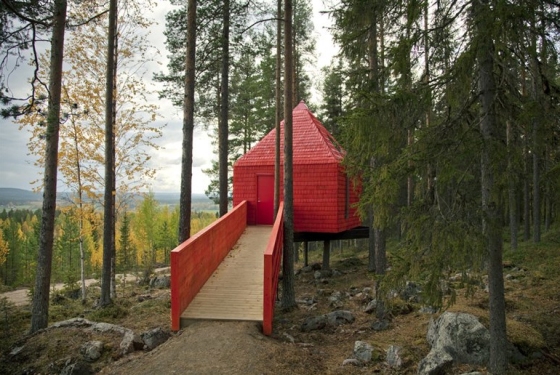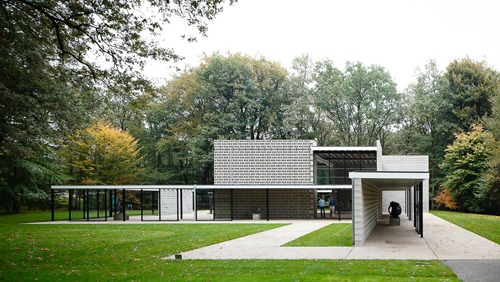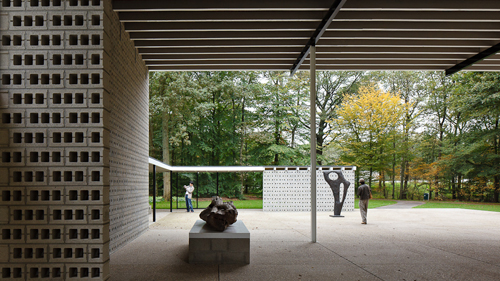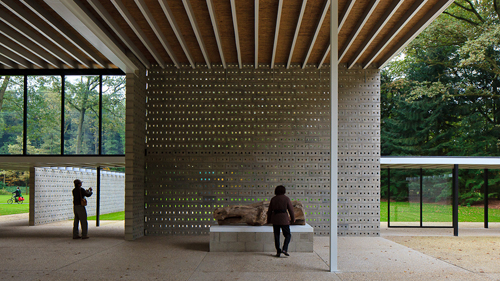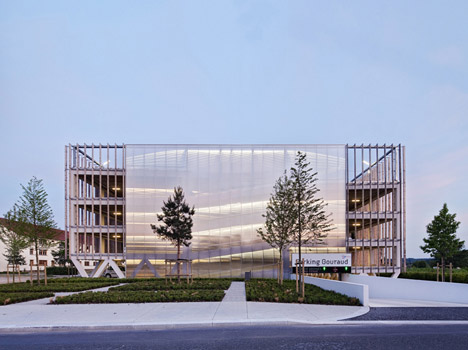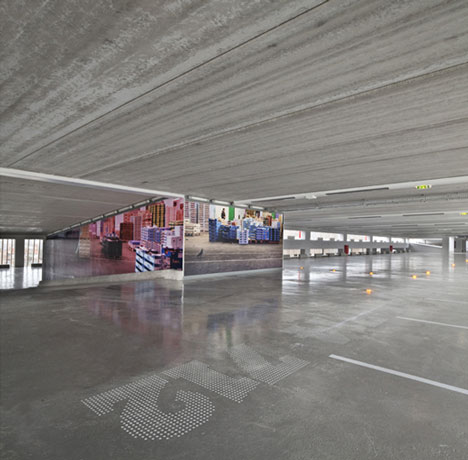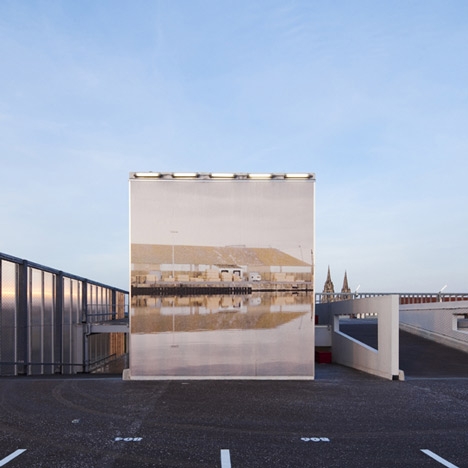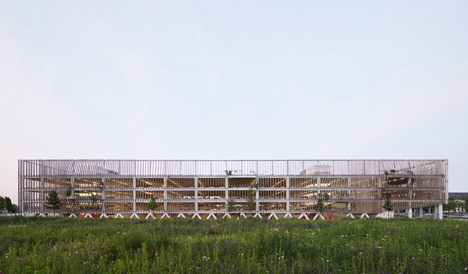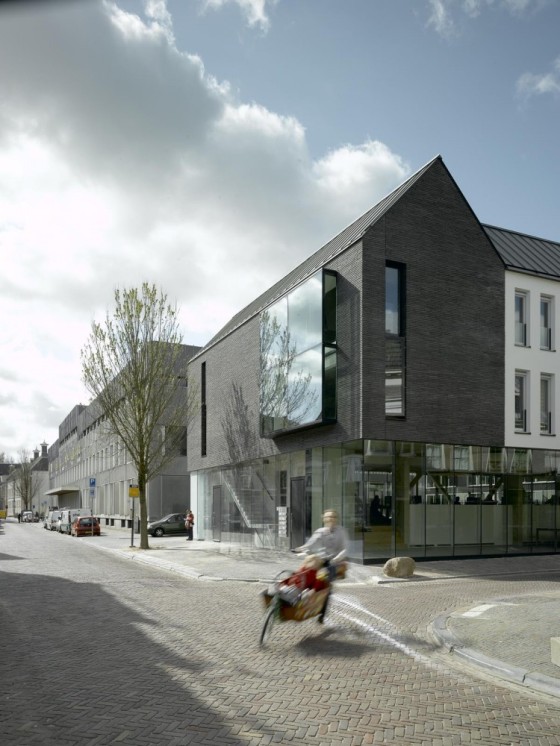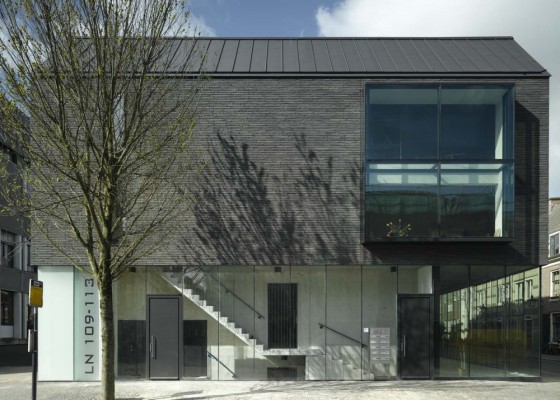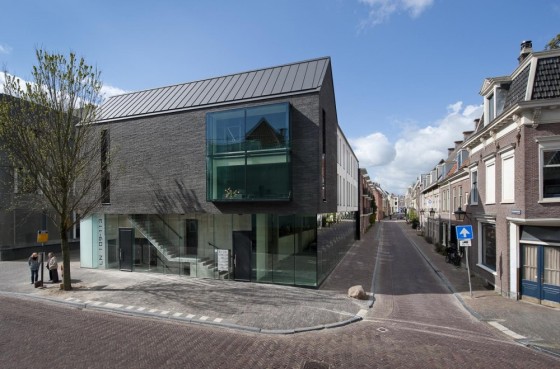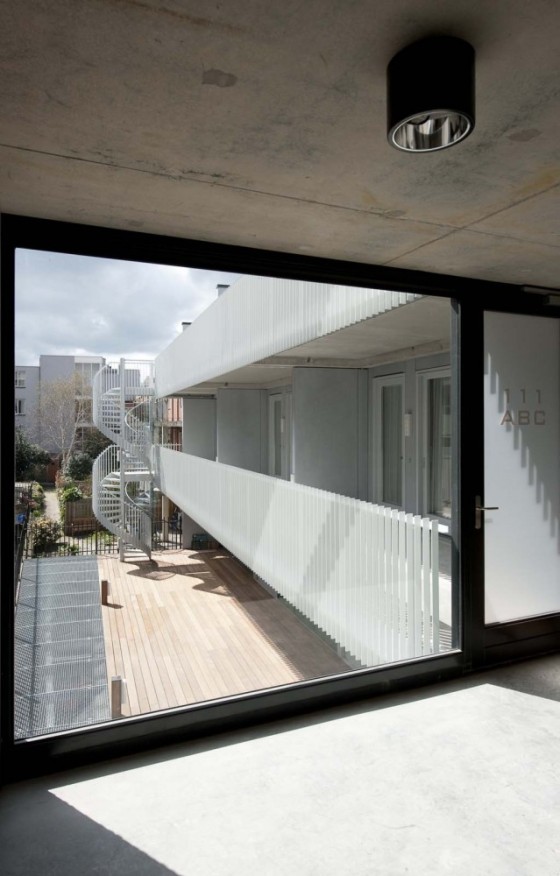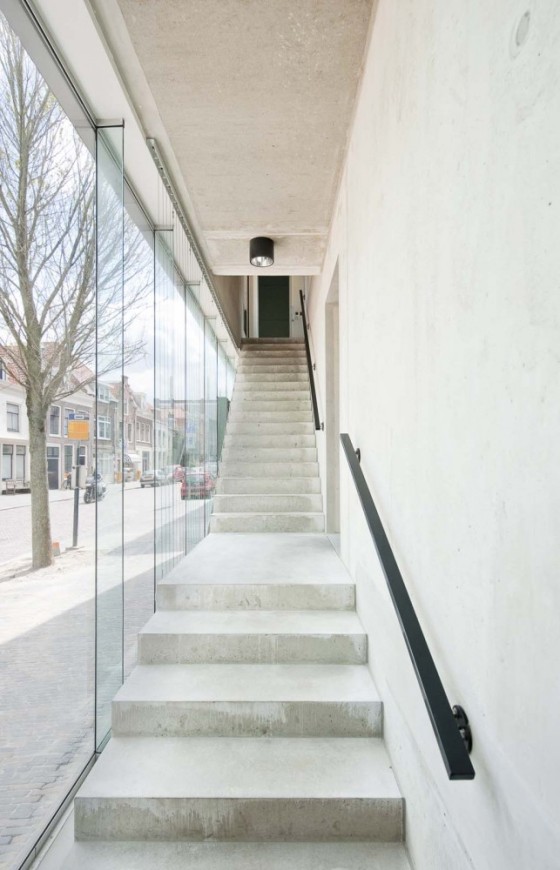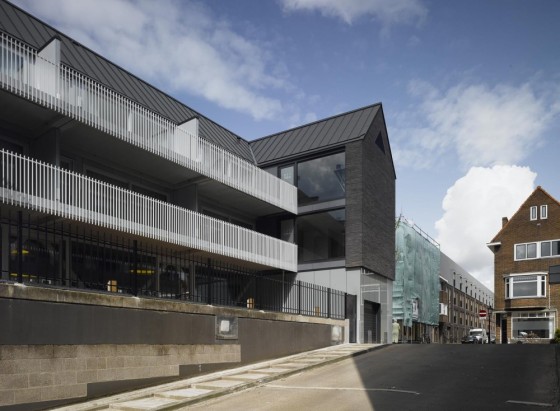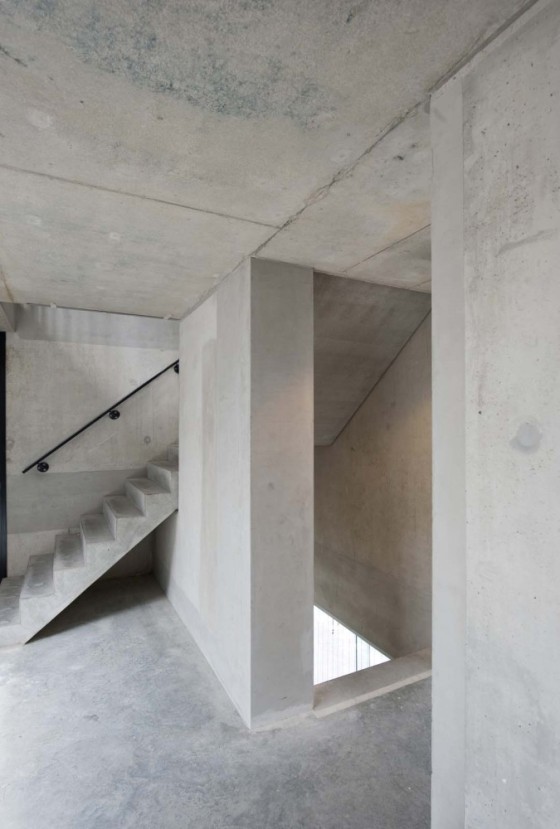Winy Maas talks about his design concepts for the Paris Plus petit.
More info on designboom
Winy Maas, about the design concepts of Paris Plus petit
Rem Koolhaas interviewed by DutchDFA
Rem Koolhaas discusses OMA‘s practice in an interview with Dutch Design Fashion Architecture:
“I don’t think you can make critical architecture because, in a sense, architecture always supports someone else’s impulse. On the other hand I think our architecture is thoroughly critical because every subject, every question, every ambition is analysed and is placed on the operating table, as it were…”
Bazaltbor Badacsony by Plant, Hungary
Hungarian architects Plant completed this winery that sits at the foot of a volcanic hill in Hungary and is clad in concrete panels indented with the pattern of grapevines. Entertaining spaces and a laboratory are located on the ground floor, underneath which are various fermentation rooms descending into the ground.
The wines of the Laposa-Cellar following the millennium became well known amongst Hungarian wine drinkers under the brand name “Bazaltbor” or Basalt wine. Their growing regions are only on the basalt hills – in Badacsony, Somló, on Szentgyörgy-hill and Csobánc – which is the reason for the characteristic mineral aromas of the wines that mirror their terroir.
The cellar founding father, Dr József Laposa, Landscape Designer, and his son, the current manager Bence, today harvest from over 20 hectares local and international varieties, amongst others Szürkebarát, Juhfark, Olasz- and Rajnai Riesling or Kéknyelű. The market entry and dynamic growth of the cellar has also resulted in the expansion of the technological and tourism areas. During the development, besides increasing the scale, the aim on both an architectural and viticultural level was to modernise and maintain the making and presentation of the basalt wine. More info, click here
Photographs by Zsolt Batar
Via Dezeen
VISIT PLANT
8 House by BIG Architects, Copenhagen, Denmark
Danish architects BIG have completed their 8 House residential project with a figure-of-eight plan in Copenhagen.
The building features a continuous cycle path and pedestrian walkway, winding up to the tenth floor and back down to ground level, and providing access to all residences. The structure wraps around two courtyards connected by a tunnel through the central cross, which houses communal facilities. Its height is lower on the south-west corner and higher at the north-east side to make best use of daylight.
“We have now completed three remarkable buildings in Orestad, the VM Houses, The Mountain and finally the 8 House – which is the sole result of a good and constructive collaboration with talented young architects who had a good understanding for the economical aspects,” Per Hopfner, Hopfner Partners
The 8 House creates two intimate interior courtyards, separated by the centre of the cross which houses 500 m2 of communal facilities available for all residents.
Photographs by Jens Lind
Video on youtube by Channelbeta
Other stories of BIG on archiDE:
– EXPO 2010 DANISH PAVILION by BIG, Shanghai, China
– BIG wins International Competition to design Tallinn’s new City Hall
– BIG and Michel Rojkind Win Cultural Competition, Mexico
– Mountain Dwellings by BIG Architects, Copenhagen, Denmark
– Zira Island masterplan by BIG architects
–VM Houses by PLOT = big + JDS in *COPENHAGEN, Denmark*
VISIT BIG ARCHITECTS
Library + Restaurant + Multifunctional Space by BOB361 Architects, Dendermonde, Belgium
BOB361 Architects completed this multifunctional building, that is located in Dendermonde, Belgium. It’s situated between the main of the city and the green bank of the river called ‘Dender’.
Three urban strategies lead to the creation of a new connection of these two contrasting atmospheres.
- The historical fortifications are transformed into a greenbelt around the centre of the city. The green passage along the library completes the missing link in this structure.
- Within the urban fabric the complex introduces a new hangout-place, enriching the social network. The presence of schools and the diverse program will activate the site day and night.
- By creating a physical pedestrian walkthrough, connecting the main shopping axis and the recreational green area, a critical mass of people can penetrate the site.
The passage gives the building four active façades. For more info, please click here
Via Archdaily
Pictures by Andre Nullens
VISIT BOB361 ARCHITECTS
Rietveld Pavilion at the Kröller-Müller Sculpture Garden, Arnhem, Netherland
In 1955, Gerrit Rietveld (1884-1964) designed a pavilion for the display of small sculptures at the Third International Sculpture Exhibition in Arnhem’s Sonsbeek Park.
This ‘Sonsbeek Pavilion’ was intended as a temporary structure, and it was dismantled when the exhibition was over. However, many people had been greatly impressed by its simplicity, and ten years later, on the initiative of several Dutch architects, the building found a permanent home in the Kröller-Müller Museum’s sculpture garden, under a new name: the ‘Rietveld Pavilion’. On 8 May 1965 the pavilion was officially inaugurated with an exhibition of sculptures by Barbara Hepworth.
Today, in 2010, the museum has rebuild the structure with new materials, while adhering as closely as possible to Gerrit Rietveld’s original design. Wherever possible, parts of the 1965 pavilion that were still in adequate condition have been reused. Construction work began in January 2010 and finished in September of this year. More info, click here
Rietveld Pavilion by Gerrit Rietveld, at the Kröller-Müller Sculpture Garden
Photography by Pedro Kok
Via ArchDaily
PEDRO KOK ARCHITECTURAL PHOTOGRAPHY
Les Yeux Verts by Jacques Ferrier Architecture, Soissons, France
Paris firm Jacques Ferrier Architectures completed this amazing multi- storey car park, that is located in Soissons, France.
Called Lez Yeux Verts, this car park can house 600 cars and forms part of a development of former barracks into a business park. The building has a concrete structure, galvanised-steel framework, and is clad in vertical spruce timbers that vary in angle and spacing to create a ripple effect.
The timber facade is punctuated by eye-shaped openings that afford views over the town, and behind which new planting will eventually grow to form hanging gardens. More information, click here
City : Soissons, France
Programme: parking, 600 spaces
Competition: projet lauréat en 2007 / winning project in 2007
Completion: mars 2010 / March 2010
Area: 12 250 m²
Cost : 6.6 M Euros
Photos are by Jacques Ferrier Architectures/photo Luc Boegly
VISIT JASQUES FERRIER ARCHITECTURE
Het Zwarte Huis Bakers Architecten, Utrecht, Netherland
Dutch firm Bakers Architecten completed these brick-clad apartments in Utrecht, the Netherlands. Its appear to float above a curtain wall of glass.
Het Zwarte Huis, or The Black House, is spread across three storeys with the upper two, which comprise six apartments, finished in Kolumba bricks. The ground floor, which forms an office, has become the architect’s new premises. The block sits on the apex of a curved street with a double-height bay window affording panoramic views.
Here’s some more from the architects:
In Utrecht’s museum quarter, just south of the city centre, there was for many years a vacant plot on the corner of Lange Nieuwstraat and Vrouwjuttenstraat. This site in the midst of historical buildings is now occupied by ‘Het Zwarte Huis’ (The Black House), a complex containing six apartments with semi-underground parking and the new premises of Bakers Architecten.
The streetscape is characterized by heterogeneous, lot-by-lot development with distinctive corner buildings. Het Zwarte Huis is a contemporary addition to the existing urban fabric, in which the notion of ‘living above work’ has been accentuated by placing the dwellings in a solid volume on top of a glazed podium. More..
Photography by Maarten Noordijk
VISIT BAKERS ARCHITECTEN
Brandbase Pallets by Most Architecture, Amsterdam, Netherland Brandbase Pallet Project / MOST Architecture
Dutch firm Most Architecture have created this temporary office from wooden pallets for an Amsterdam advertising company.
The project for advertising agency BrandBase sits in a narrow Dutch canal house that runs 27 metres deep.
The pallet structure is designed in such a way that besides being merely a workplace, the entire element invites you to stand, sit or lay down on the pallets. This open office concept was created to suit the creative advertising agency, with an additional, informal atmosphere.


Find the pallet project on FACEBOOK!
